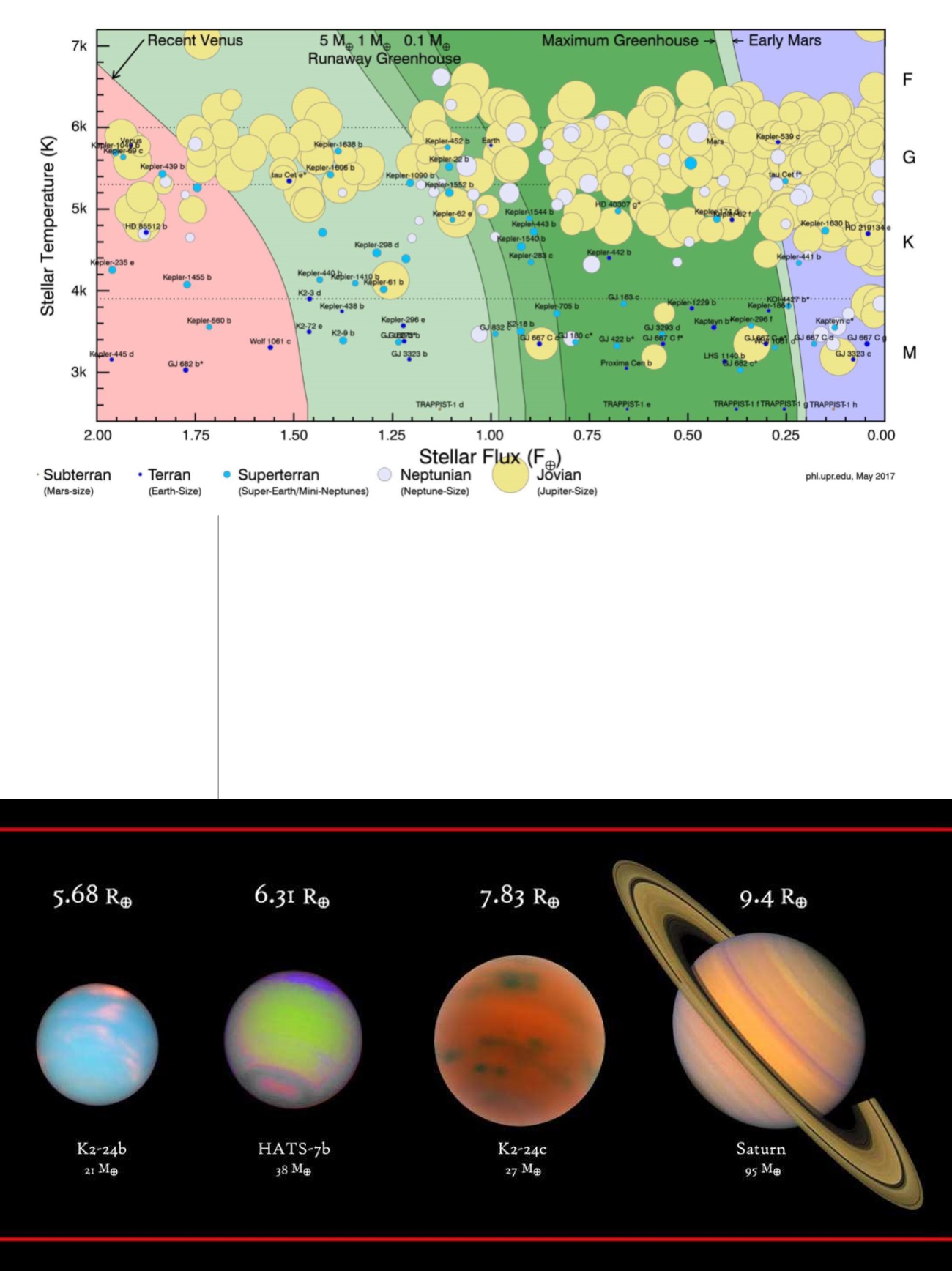

T
his graphic
shows all
planets near the
habitable zone
(darker green
shade is the con-
servative habit-
able zone and the
lighter green
shade is the opti-
mistic habitable
zone). Only those
planets less than
10 Earth masses or
2.5 Earth radii are
labeled (*= uncon-
firmed). [PHL @
UPR Arecibo]
opment of the technologies that will equip
the space observatory. Nevertheless, we
can take an overview of the mission and
the goals it wants to achieve. The medium-
sized spacecraft and its load of scientific
instruments will probably be launched
with a Soyuz-Fregat rocket and put into a
Lissajous orbit around Lagrangian point
L2, about 1.5 million km from Earth, head-
ing away from the Sun. The scientific in-
struments will consist of at least 26 six-lens
white-light cameras, each having on its
focal point 4 CCDs with 4150x4150 18-mi-
cron pixels. Each camera will cover 1100
square degrees of sky (the dimensions of
the Aquarius constellation), but as they are
arrayed in groups that are offset by about
ten degrees, each pointing will allow it to
capture about 2250 square degrees.
Twenty-four cameras in groups of 6 will
continually monitor stars of a magnitude
greater than 8 (up to magnitude 13, if not
beyond) and the light they collect will be
read every 25 seconds. The two remaining
cameras will, instead, be devoted to more
luminous stars with magnitudes between
about 4 and 8 and will be scanned every
2.5 seconds. In the 4 years of its nominal
mission (designed to last twice that),
PLATO will cover between 10% and 50%
of the sky and will constantly record the
luminous intensity of probably between
















